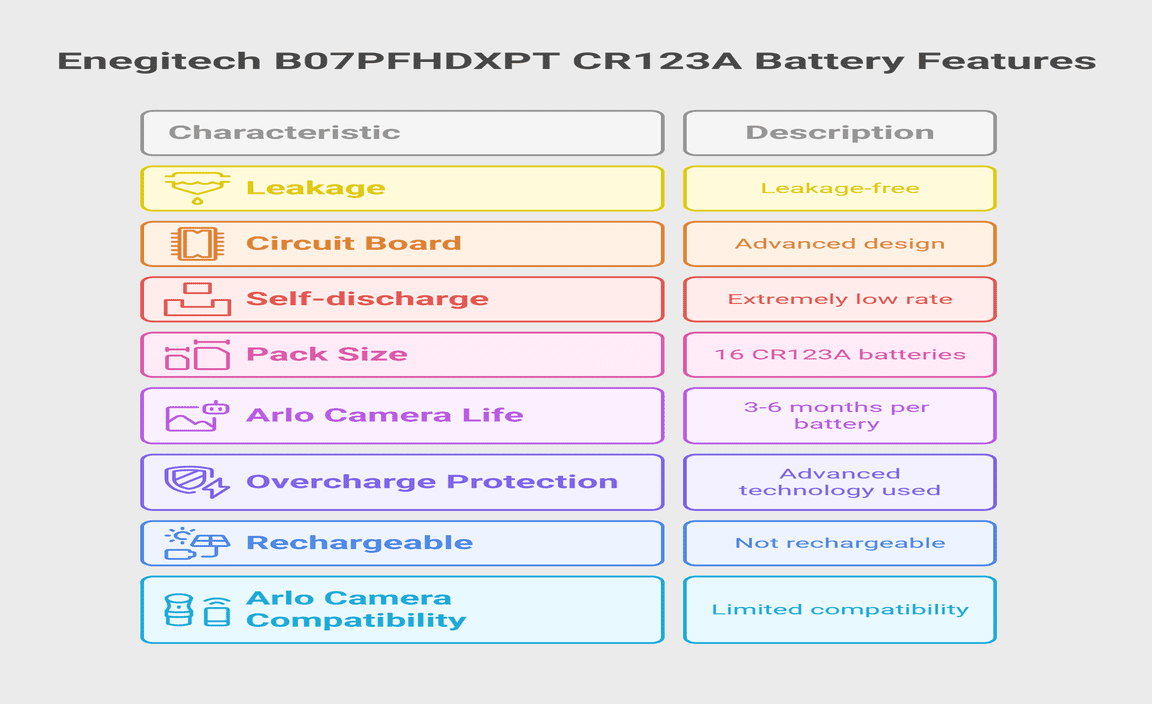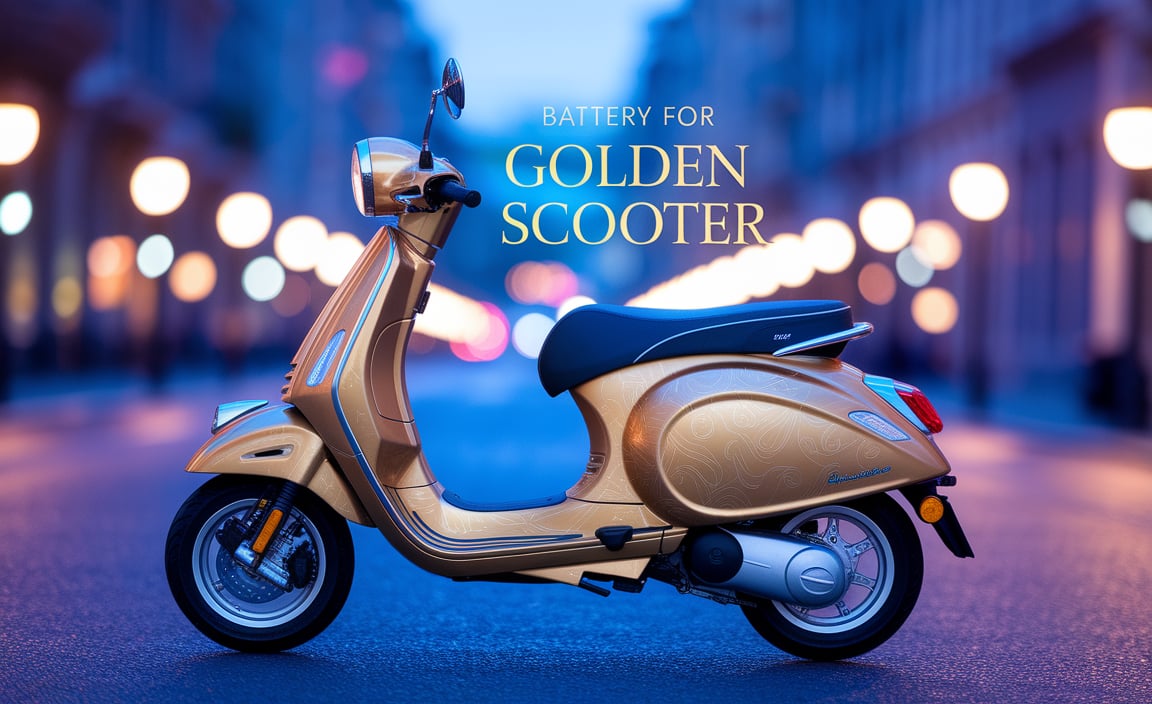Riding lawn mower batteries typically cost between $70 and $200, with most falling in the $100-$150 range. The price depends on the battery’s size, type (like AGM or flooded lead-acid), brand, and where you buy it.
Is your trusty riding lawn mower giving you trouble starting up? Don’t let a dead battery stop your weekend yard work! Many folks find replacing a mower battery a bit confusing. Prices seem to swing wildly, and we all want to get the best bang for our buck without sacrificing reliability. This guide is here to help. We’ll break down exactly what goes into the cost of a riding mower battery and how to find an affordable, dependable one that gets your mower roaring back to life. Let’s make sure your lawn care routine stays smooth and stress-free.
Understanding Riding Lawn Mower Battery Costs: What You Need to Know
So, you’re wondering, “How much is a battery for a riding lawn mower?” It’s a common question, and the answer isn’t a single number. Think of it like buying tires for your car – there are different options, brands, and features that affect the price. Our goal here is to give you a clear picture so you can make a smart choice. We’ll look at everything from the simple lead-acid types to the more advanced ones, and why an investment in the right battery pays off.
Factors Influencing Battery Price
Several things determine how much you’ll spend on a new battery for your riding mower. It’s not just about the brand name; it’s about the technology, size, and what you need the battery to do.
- Size and Group Number: Like car batteries, mower batteries come in different sizes, often referred to by a “group number” (e.g., Group U1, Group 24). Larger batteries generally have more power and cost more.
- Battery Type: The most common types are flooded lead-acid (the traditional kind) and AGM (Absorbent Glass Mat) batteries. AGM batteries are usually more expensive because they’re sealed, maintenance-free, and handle vibrations better – a big plus for bumpy yard work.
- Cold Cranking Amps (CCA): This measures the battery’s ability to start an engine in cold weather. A higher CCA usually means a higher price, as it indicates a more powerful battery.
- Reserve Capacity (RC): This tells you how long the battery can run essential accessories if the alternator fails. More capacity often equals more dollars.
- Brand Reputation: Well-known, trusted brands like DieHard, EverStart, or Optima (for premium options) might cost a bit more but often come with better warranties and proven reliability.
- Warranty: A longer warranty period usually signifies a manufacturer’s confidence in their product, and this can translate to a slightly higher upfront cost. Think of it as paying for peace of mind.
- Retailer: Prices can vary between big box stores, auto parts specialists, and online retailers. Buying online might offer more competitive pricing, but consider shipping costs and ease of returns.
Average Price Ranges
Let’s get down to numbers. Based on these factors, here’s what you can generally expect:
| Battery Type/Feature | Typical Price Range | Why it Costs This Much |
|---|---|---|
| Basic Flooded Lead-Acid (U1 size) | $75 – $120 | Standard technology, widely available, requires maintenance. |
| AGM (Absorbent Glass Mat) (U1-sized equivalent) | $100 – $170 | Maintenance-free, spill-proof, better vibration resistance, longer lifespan. |
| Premium/High-CCA Batteries | $120 – $200+ | Higher power output for tough starts, enhanced durability, often with longer warranties. |
| Specialty/Large Format Batteries | $150 – $250+ | For larger, more powerful mowers that demand more energy. |
As you can see, the sweet spot for most riding mower batteries is between $100 and $150. If you see prices significantly lower, double-check the specs and warranty. If prices are much higher, be sure you’re getting a battery with premium features you actually need.
Choosing the Right Battery: Beyond Just the Price Tag
When you’re staring at rows of batteries, it’s easy to get overwhelmed. But remember, the “cheapest” battery isn’t always the “best value.” You need a battery that’s compatible with your mower and will last. Here’s how to pick the right one:
Step 1: Find Your Mower’s Battery Specifications
This is the most crucial step. Don’t guess! Your mower’s owner’s manual is your best friend here. It will tell you the exact group number (like U1, U1R, 24F, etc.) and the recommended power output (CCA). If you don’t have the manual, look for a label on your current battery. It should have the group number, and sometimes even a recommended CCA or terminal orientation (where the positive and negative posts are).
Tip: If your current battery is damaged or unreadable, search online for your specific mower model and year. Many manufacturer websites or forums will have this information.
Step 2: Decide Between Flooded Lead-Acid and AGM
- Flooded Lead-Acid: These are the most common and generally the most affordable. They work well for many mowers. However, they require maintenance (checking and topping up the water levels) and are susceptible to damage from vibrations. They’re also not ideal if you live in extreme temperatures.
- AGM (Absorbent Glass Mat): These are a step up. They are completely sealed, so they don’t need watering and are spill-proof. They handle vibrations much better, which is great for a bumpy ride across the lawn. They also tend to have a longer lifespan and can recover better from deep discharges. While more expensive upfront, many find the low maintenance and durability worth the cost.
Step 3: Consider Power Needs (CCA and RC)
Cold Cranking Amps (CCA): For most residential riding mowers, a battery with around 300-350 CCA is usually sufficient. If you have a larger engine, mow in colder conditions, or have experienced slow startups, consider a battery with higher CCA (400+). More CCA means more power to turn the engine over when it’s cold or the engine is under strain.
Reserve Capacity (RC): For a typical riding mower, RC isn’t as critical as CCA unless you plan to run a lot of accessories directly off the battery (like high-powered lights or electric implements). If your mower sits idle for long periods or you need to ensure consistent power to accessories, a higher RC is beneficial.
Step 4: Look at the Warranty
A good warranty is a sign of a quality battery. Don’t just look at the number of months; check if it’s a “free replacement” warranty or a “pro-rated” one. A 12-month free replacement warranty is better than a 24-month pro-rated warranty, where you’ll have to pay a portion of the cost of a replacement after the first year.
Step 5: Where to Buy
- Auto Parts Stores: Places like AutoZone, O’Reilly Auto Parts, Advance Auto Parts often have a good selection and knowledgeable staff who can help you find the right fit. They might also offer installation services or battery testing.
- Big Box Retailers: Walmart, Home Depot, and Lowe’s carry a range of mower batteries, and often at competitive prices. Selection might be more limited than at a dedicated auto parts store.
- Online Retailers: Amazon, Batteries Plus Bulbs, and specialized battery sites can offer a vast selection and great prices. Be sure to factor in shipping costs and ensure you’re buying from a reputable seller with a good return policy.
- Local Mower Shops: Your local lawn and garden dealer can be a great resource, especially for specialized batteries or if you want expert advice tailored to your specific mower brand.
The Lifespan of a Riding Mower Battery and How to Extend It
How long can you expect your new riding mower battery to last? Generally, a well-maintained battery in a riding mower can last anywhere from 3 to 5 years. However, this is just an average. Factors like climate, usage patterns, battery care, and the battery’s quality itself play a huge role.
Factors Affecting Battery Lifespan
- Charge Level: Letting a battery discharge completely or frequently running it low significantly shortens its life.
- Temperature Extremes: Both extreme heat and extreme cold can degrade a battery faster. Heat is especially damaging to the internal components.
- Vibrations: Constant jolting and shaking can be hard on a battery, especially older flooded types.
- Corrosion: Battery terminal corrosion can impede electrical flow and lead to premature failure.
- Usage: Infrequent use and long periods of storage without charging can also harm the battery.
Tips for Making Your Battery Last Longer
Taking good care of your battery is the best way to get the most out of it and avoid premature replacement costs.
-
Keep it Clean:
Regularly check the battery terminals for any white or bluish powdery corrosion. Clean them gently with a wire brush and a mixture of baking soda and water. Rinse with clean water and dry thoroughly. Applying a thin layer of dielectric grease or petroleum jelly after cleaning can help prevent future corrosion.
-
Ensure it’s Fully Charged:
After each use, make sure your mower’s charging system is working. If you store your mower for extended periods (more than a month), consider using a battery tender or a smart charger. These devices maintain a full charge without overcharging, which is crucial for battery health.
For those interested in battery maintenance in general, understanding how battery tenders work can be very helpful. You can learn more about smart chargers and battery tenders from resources like the U.S. Department of Energy’s Vehicle Technologies Office.
-
Check Water Levels (for Flooded Batteries):
If you have a traditional flooded lead-acid battery, check the electrolyte (water) levels every few months, especially during hot weather. If the plates are not covered, add only distilled water until they are covered by about a quarter inch. Never use tap water, as the minerals in it can damage the battery.
-
Test the Charging System Periodically:
Your mower’s alternator is responsible for keeping the battery charged while the engine is running. A faulty alternator can overcharge (boiling the battery) or undercharge (leading to a dead battery). You can test this with a multimeter – with the engine running, you should see a voltage reading around 13.5V to 14.5V across the battery terminals.
-
Secure the Battery:
Ensure the battery is securely mounted and that nothing is vibrating excessively against it. Loose connections or excessive movement can damage the battery case and internal structure.
-
Avoid Deep Discharges:
Try to avoid letting the battery die completely. If your mower struggles to start, address the issue sooner rather than later. Repeated deep discharges significantly reduce a battery’s lifespan.
Installation: A Beginner’s Guide to Swapping Your Mower Battery
Replacing your riding mower battery can seem daunting, but it’s usually a straightforward DIY job. Safety first! Always wear safety glasses and gloves. Batteries contain acid and can produce flammable gases.
Tools and Materials You’ll Need:
- New riding mower battery (correct size and type for your mower)
- Wrench set (usually 10mm and 13mm are common for terminals and hold-downs)
- Wire brush or battery terminal cleaner
- Baking soda and water solution (for cleaning corrosion)
- Dielectric grease or petroleum jelly (optional, for terminal protection)
- Safety glasses
- Work gloves
- Rag or paper towels
Step-by-Step Installation:
-
Park and Disconnect:
Park your mower on a level surface and engage the parking brake. Turn off the engine and remove the key. Crucially, disconnect the NEGATIVE (-) terminal cable first. This is typically the black cable. Use your wrench to loosen the nut, then gently twist and pull the cable off the terminal post.
-
Disconnect the POSITIVE (+) Terminal:
Next, disconnect the POSITIVE (+) terminal cable (usually red). Again, loosen the nut and remove the cable. Be careful not to let the positive cable touch any metal parts of the mower, as this can cause a short circuit.
-
Remove the Battery Hold-Down:
Most riding mowers have a bracket or strap securing the battery. Locate and remove this hold-down mechanism. It might be a clamp at the base of the battery or a strap across the top. Keep track of any nuts and bolts!
-
Lift Out the Old Battery:
Carefully lift the old battery straight up and out of the battery tray. Batteries are heavy, so lift with your legs. If it’s stuck, check for any missed hold-down parts or debris. Inspect the battery tray for damage or excessive corrosion.
-
Clean the Tray and Terminals:
Clean the battery tray and the terminals on your new battery. Use the wire brush and baking soda solution to remove any corrosion from the cables and terminals. Wipe everything down with a clean rag.
-
Install the New Battery:
Carefully place the new battery into the battery tray, ensuring it’s oriented correctly (positive and negative posts in the same position as the old battery).
-
Secure the New Battery:
Reinstall the battery hold-down mechanism to secure the new battery in place. Make sure it’s snug but not so tight that you risk cracking the battery case.
-
Reconnect the Cables:
Connect the POSITIVE (+) terminal cable first. Tighten the nut securely. Then, connect the NEGATIVE (-) terminal cable and tighten its nut. Applying a bit of dielectric grease to the terminals after connecting can help protect them.
-
Final Check:
Ensure all connections are tight and the battery is secure. Double-check that you reconnected the correct terminals (positive to positive, negative to negative!).
-
Test It Out:
Insert the key, turn it to start, and fire up your mower! If it starts right up, congratulations, you’ve successfully replaced your battery!
Important: Always dispose of your old car battery responsibly. Most auto parts stores and recycling centers will accept old batteries for proper disposal. For more on safe battery handling, check out guidelines from resources like the U.S. Environmental Protection Agency on lead-acid battery recycling.
Riding Lawn Mower Battery FAQs: Your Quick Answers
Q1: How do I know if my riding mower battery is dead?
A: The most common sign is that your mower won’t crank or start when you turn the key. You might hear a rapid clicking sound or nothing at all. Other signs include dim headlights (if equipped), slow cranking, or a battery that looks swollen or corroded.
Q2: Can I use a car battery in my riding mower?
A: While some very large riding mowers might be able to physically fit and use a small car battery, it’s generally not recommended. Mower batteries are designed for the specific power demands and vibration levels of lawn equipment, while car batteries are built for cold engine cranking. They might not fit correctly, could be over/underpowered, and may not handle outdoor conditions well.
Q3: What does “U1” mean for a lawn mower battery?
A: “U1” is a standard size designation for a type of lawn and garden battery. It refers to a common group size that fits many riding mowers. There are variations like “U1R,”



